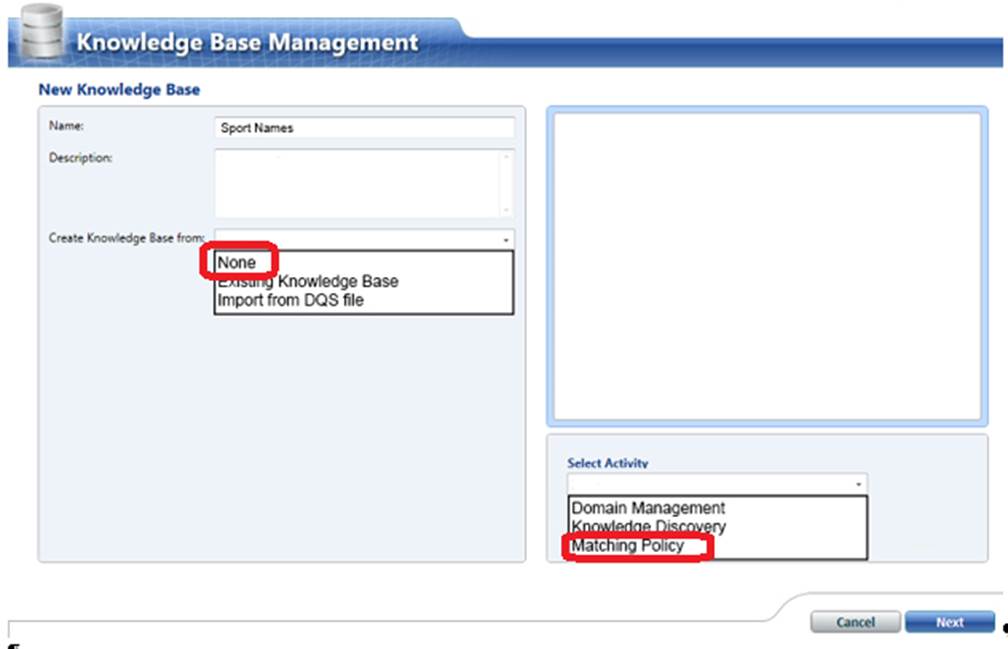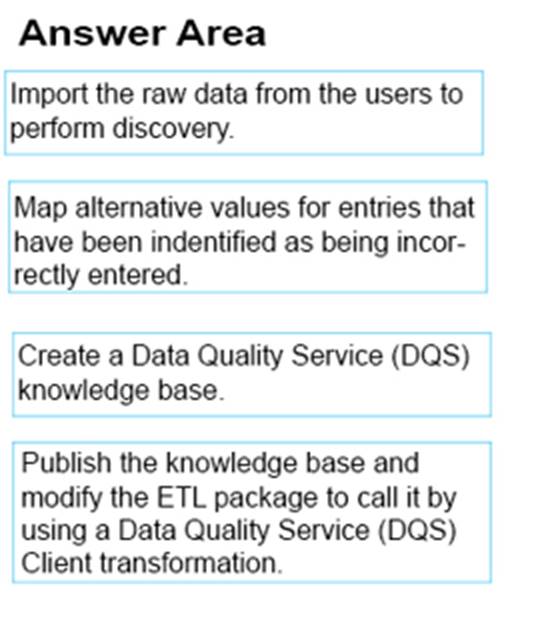Microsoft 70-767 Implementing a SQL Data Warehouse Online Training
Microsoft 70-767 Online Training
The questions for 70-767 were last updated at Mar 06,2025.
- Exam Code: 70-767
- Exam Name: Implementing a SQL Data Warehouse
- Certification Provider: Microsoft
- Latest update: Mar 06,2025
HOTSPOT
You have a series of analytic data models and reports that provide insights into the participation rates for sports at different schools. Users enter information about sports and participants into a client application. The application stores this transactional data in a Microsoft SQL Server database. A SQL Server Integration Services (SSIS) package loads the data into the models.
When users enter data, they do not consistently apply the correct names for the sports. The following table shows examples of the data entry issues.

You need to create a new knowledge base to improve the quality of the sport name data.
How should you configure the knowledge base? To answer, select the appropriate options in the dialog box in the answer area.
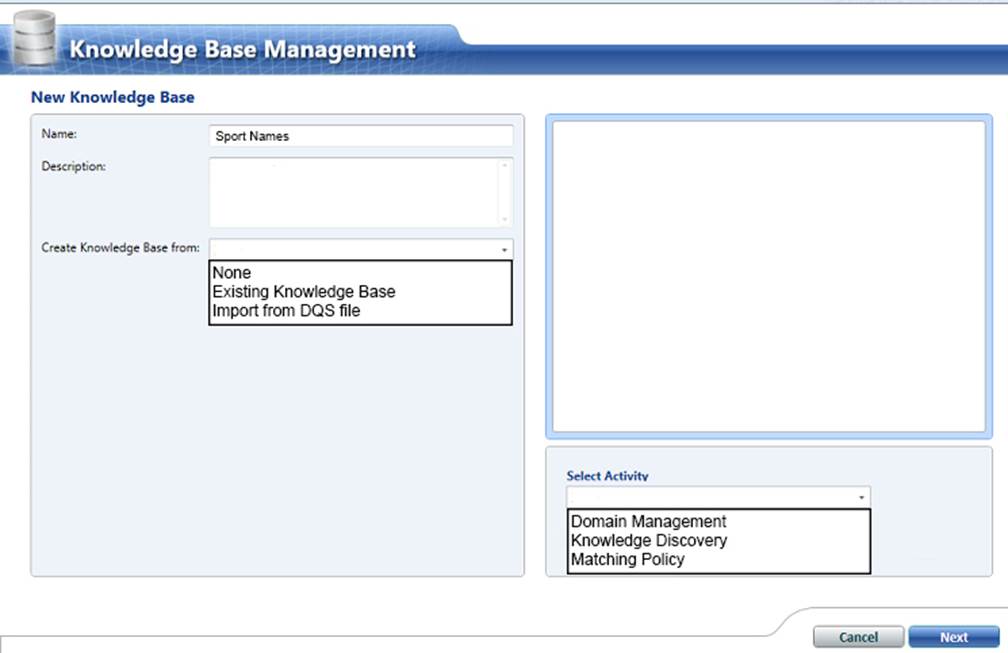
DRAG DROP
You have a series of analytic data models and reports that provide insights into the participation rates for sports at different schools. Users enter information about sports and participants into a client application. The application stores this transactional data in a Microsoft SQL Server database. A SQL Server Integration Services (SSIS) package loads the data into the models.
When users enter data, they do not consistently apply the correct names for the sports. The following table shows examples of the data entry issues.

You need to improve the quality of the data.
Which four actions should you perform in sequence? To answer, move the appropriate actions from the list of actions to the answer area and arrange them in the correct order.
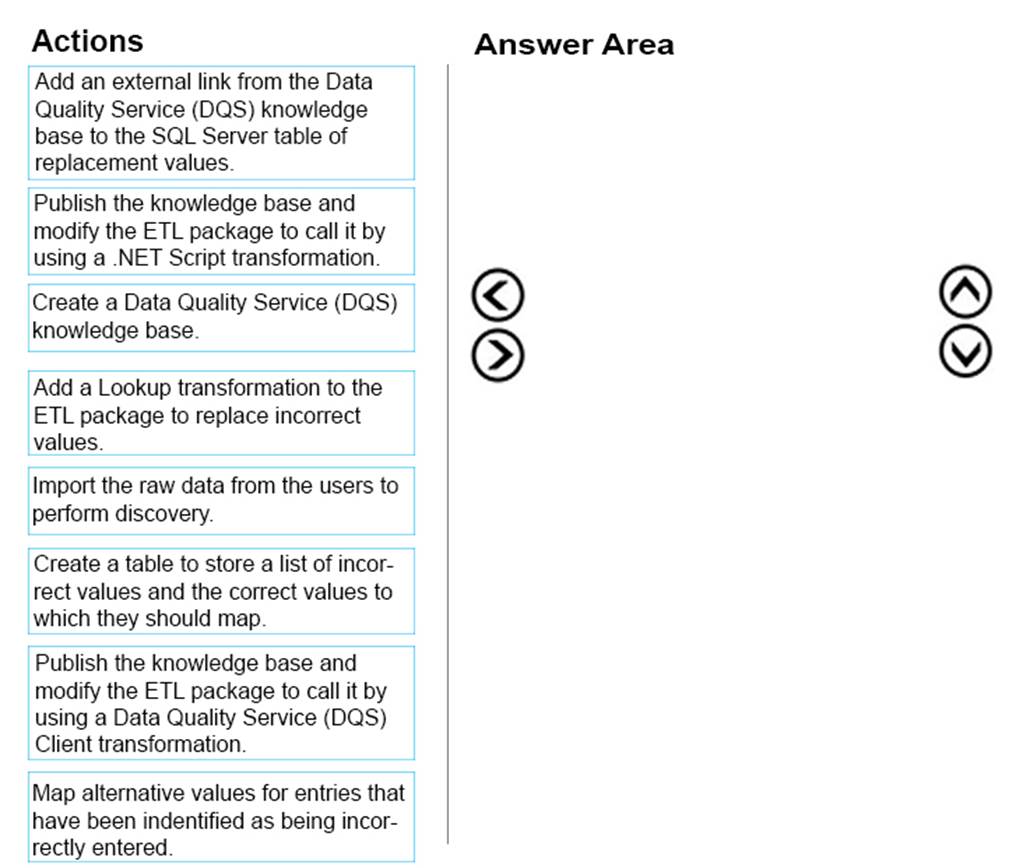
Note: This question is part of a series of questions that present the same scenario. Each question in the series contains a unique solution that might meet the stated goals. Some question sets might have more than one correct solution, while others might not have a correct solution.
After you answer a question in this section, you will NOT be able to return to it. As a result, these questions will not appear in the review screen.
You plan to deploy a Microsoft SQL server that will host a data warehouse named DB1.
The server will contain four SATA drives configured as a RAID 10 array.
You need to minimize write contention on the transaction log when data is being loaded to the database.
Solution: You replace the SATA disks with SSD disks.
Does this meet the goal?
- A . Yes
- B . No
Note: This question is part of a series of questions that present the same scenario. Each question in the series contains a unique solution that might meet the stated goals. Some question sets might have more than one correct solution, while others might not have a correct solution.
After you answer a question in this section, you will NOT be able to return to it. As a result, these questions will not appear in the review screen.
You plan to deploy a Microsoft SQL server that will host a data warehouse named DB1.
The server will contain four SATA drives configured as a RAID 10 array.
You need to minimize write contention on the transaction log when data is being loaded to the database.
Solution: You add more data files to DB1.
Does this meet the goal?
- A . Yes
- B . No
Note: This question is part of a series of questions that present the same scenario. Each question in the series contains a unique solution that might meet the stated goals. Some question sets might have more than one correct solution, while others might not have a correct solution.
After you answer a question in this section, you will NOT be able to return to it. As a result, these questions will not appear in the review screen.
You plan to deploy a Microsoft SQL server that will host a data warehouse named DB1.
The server will contain four SATA drives configured as a RAID 10 array.
You need to minimize write contention on the transaction log when data is being loaded to the database.
Solution: You configure the server to automatically delete the transaction logs nightly.
Does this meet the goal?
- A . Yes
- B . No
Note: This question is part of a series of questions that present the same scenario. Each question in the series contains a unique solution that might meet the stated goals. Some question sets might have more than one correct solution, while others might not have a correct solution.
After you answer a question in this section, you will NOT be able to return to it. As a result, these questions will not appear in the review screen.
You have a Microsoft Azure SQL Data Warehouse instance. You run the following Transact-SQL statement:

The query fails to return results.
You need to determine why the query fails.
Solution: You run the following Transact-SQL statements:
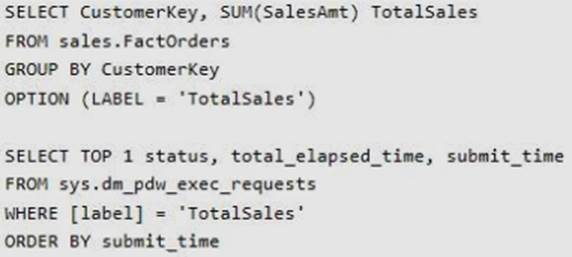
Does the solution meet the goal?
- A . Yes
- B . No
Note: This question is part of a series of questions that present the same scenario. Each question in the series contains a unique solution that might meet the stated goals. Some question sets might have more than one correct solution, while others might not have a correct solution.
After you answer a question in this sections, you will NOT be able to return to it. As a result, these questions will not appear in the review screen.
You have a Microsoft Azure SQL Data Warehouse instance. You run the following Transact-SQL statement:

The query fails to return results.
You need to determine why the query fails.
Solution: You run the following Transact-SQL statement:

Does the solution meet the goal?
- A . Yes
- B . No
Note: This question is part of a series of questions that present the same scenario. Each question in the series contains a unique solution that might meet the stated goals. Some question sets might have more than one correct solution, while others might not have a correct solution.
After you answer a question in this section, you will NOT be able to return to it. As a result, these questions will not appear in the review screen.
Your company uses Microsoft SQL Server to deploy a data warehouse to an environment that has a SQL Server Analysis Services (SSAS) instance. The data warehouse includes the Fact.Order table as shown in the following table definition. The table has no indexes.
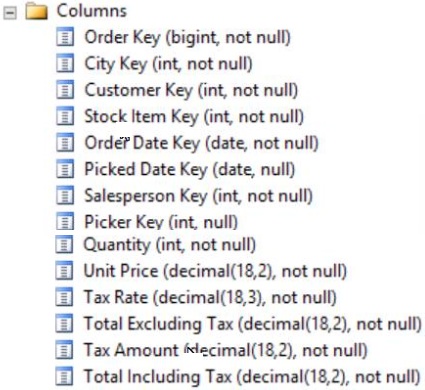

You need to ensure that the queries complete as quickly as possible.
Solution: You create measure for the Fact.Order table. Does the solution meet the goal?
- A . Yes
- B . No
Note: This question is part of a series of questions that present the same scenario. Each question in the series contains a unique solution that might meet the stated goals. Some question sets might have more than one correct solution, while others might not have a correct solution.
After you answer a question in this section, you will NOT be able to return to it. As a result, these questions will not appear in the review screen.
Your company uses Microsoft SQL Server to deploy a data warehouse to an environment that has a SQL Server Analysis Services (SSAS) instance. The data warehouse includes the Fact.Order table as shown in the following table definition. The table has no indexes.
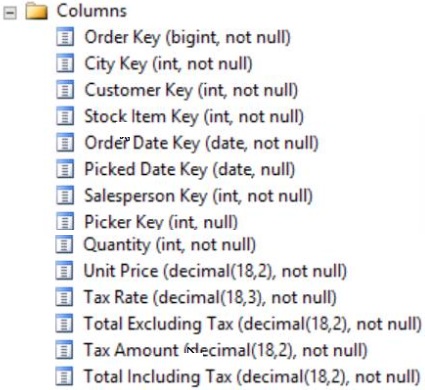
You must minimize the amount of space that indexes for the Fact.Order table consume. You run the following queries frequently. Both queries must be able to use a columnstore index:

You need to ensure that the queries complete as quickly as possible.
SolutionvYou create two nonclustered indexes. The first includes the [Order Date Key] and [Tax Amount] columns. The second will include the [Order Date Key] and [Total Excluding Tax] columns.
Does the solution meet the goal?
- A . Yes
- B . No
Note: This question is part of a series of questions that present the same scenario. Each question in the series contains a unique solution that might meet the stated goals. Some question sets might have more than one correct solution, while others might not have a correct solution.
After you answer a question in this section, you will NOT be able to return to it. As a result, these questions will not appear in the review screen.
Your company uses Microsoft SQL Server to deploy a data warehouse to an environment that has a SQL Server Analysis Services (SSAS) instance. The data warehouse includes the Fact.Order table as shown in the following table definition. The table has no indexes.
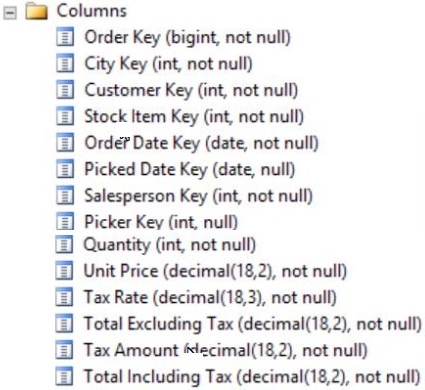
You must minimize the amount of space that indexes for the Fact.Order table consume. You run the following queries frequently. Both queries must be able to use a columnstore index:

You need to ensure that the queries complete as quickly as possible.
Solution: You create one columnstore index that includes the [Order Date Key], [Tax Amount], and [Total Excluding Tax] columns.
Does the solution meet the goal?
- A . Yes
- B . No
Latest 70-767 Dumps Valid Version with 136 Q&As
Latest And Valid Q&A | Instant Download | Once Fail, Full Refund

